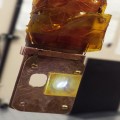 2013-09-17
2013-09-17
By inserting platinum atoms into an organic semiconductor, University of Utah physicists were able to “tune” the plastic-like polymer to emit light of different colors – a step toward more efficient, less expensive and truly white organic LEDs for light bulbs of the future.
Continue reading →
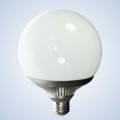 2013-09-17
2013-09-17
MaxLite introduces a 15-watt LED G40 Globe for vanity and decorative lighting fixtures. The dimmable LED G40 integrates high function and an elegant, classic look that are perfect for a wide variety of bath and other applications in fine homes, hotels, restaurants and other commercial spaces.
Continue reading →
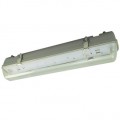 2013-09-17
2013-09-17
Vibe's existing weatherproof battens, strips of high quality Tridonic LED modules, which produce light outputs similar to fluorescent tubes, are installed to replace the tubes. Featuring a high LOR frosted diffuser to soften the light and engineered quality heat management, these fittings ensure high performance and long life.
Continue reading →
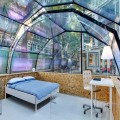 2013-09-17
2013-09-17
Philips Hue, has been installed at the Photon Project’s Photon Pod at the London Design Festival. The all-glass pod is a prototype for the Photon Project that will collect invaluable data and insights on the links between light, and health and wellbeing over a planned four-year period. The Photon Project is a scientific study initiated by glass engineering company Cantifix, and Oxford University, to explore in detail the effects of light on the biological clock – which in turn affects the health, wellbeing, mood and behavior of each of us.
Continue reading →
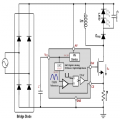 2013-09-16
2013-09-16
Fairchild Semiconductor, a semiconductor manufacturer recently offered insights into how to design a flicker-free LED light source.
Continue reading →
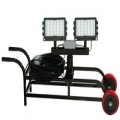 2013-09-16
2013-09-16
Larson Electronics has announced the release of a new LED light cart designed to provide high power illumination combined with the convenience of a rugged aluminum wheeled cart mounting platform. The WAL-WBC-2X150LED Cart Mounted LED Work Area Light produces 29,580 lumens of light and features an easy to handle wheel barrow style cart for fast and convenient transport around large work areas.
Continue reading →
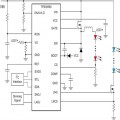 2013-09-16
2013-09-16
Texas Instrument Product Engineer David Zhang shares insights on LED color tuning technology in a recent blog post. As Tim Sullivan indicated in an earlier blog as well, LED lighting is a relatively new technology. Engineers that used to change bulb color through the glass fixture are now finding themselves figuring out how to change or tune lighting color in high-end LED fixtures. One of the easiest ways to do this is through multiple strings of different color LEDs with dimming. I wrote a paper, “Dimming multiple LED strings enables color-tunable luminaires”, on this topic that was published recently in LEDs Magazine. As well, I included a link below to a video demonstration on this topic.
Continue reading →
2013-09-16
The American Tobacco Campus, a national model for historic redevelopment, is pushing boundaries and setting new standards for energy efficiency as part of a new collaboration with Duke Energy and LED innovator, Cree, Inc.
Continue reading →
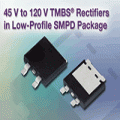 2013-09-16
2013-09-16
Vishay Intertechnology, Inc. today expanded its offering of TMBS® Trench MOS Barrier Schottky rectifiers with 16 new 45 V, 50 V, 60 V, 100 V, and 120 V devices that feature a wide range of current ratings from 10 A to 60 A and extremely low forward voltage drop for commercial applications. The devices are offered in the low-profile SMPD package, which is footprint compatible with the D2PAK (TO-263) while offering a lower typical height of 1.7 mm.
Continue reading →
2013-09-14
The LED specialists behind Visiblelighting.co.uk have responded to news that a new UV LED could pave the way for portable, lower cost devices.
Continue reading →
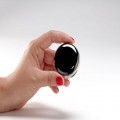 2013-09-14
2013-09-14
Sleek, innovative product design transforms the personal breathalyzer into a classy fashion statement.
Continue reading →
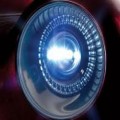 2013-09-14
2013-09-14
Fitting the right car driving lights can be the key to improved safety when driving off-road or in rural locations at night. All Tuff Lighting knows precisely which HID lights are best suited for any off-road or rural driving purposes anywhere in Australia.
Continue reading →
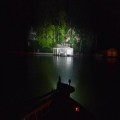 2013-09-14
2013-09-14
Rigid Industries LED Lighting releases four new products. These new products include the Trolling Motor Mount Light Kit which helps boaters keep their hands on the wheel for safety first to the versatile Suction Cup Mount Kit which allows change of application anytime you need light in a different area.
Continue reading →
2013-09-13
Solomon Systech Limited today announced that it has successfully developed China’s 1st qHD AMOLED display driver IC with Visionox. Solomon Systech is a leading international semiconductor company providing display IC products and system solutions. It is also the global market leader of PMOLED. Visionox is a leading display panel manufacturer focusing on the development of OLED technology and products.
Continue reading →
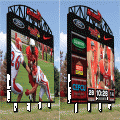 2013-09-13
2013-09-13
Daktronics announced today that Illinois State University has asked the company to design, manufacture and install an LED video display for Hancock Stadium. The installation will improve the fan experience through the visual elements shown on a new display with a 15HD pixel layout that measures more than 26 feet high by 47 feet wide.
Continue reading →
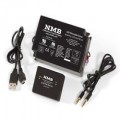 2013-09-13
2013-09-13
NMB adds to the LED programmable driver family by introducing the new 10~20W Performance Line LED drivers. The Performance Line delivers a single programmable driver that offers output current ranges of 350mA to 2A, 0~10V low voltage dimming and digital PWM dimming function, 130K hours lifetime at 40°C, as well as RoHS and WEEE Certification.
Continue reading →
 2013-09-12
2013-09-12
The use of state-of-the art LED lighting and camera will create the illusion of invisibility, making the tower look as if it has disappeared.
Continue reading →
2013-09-12
Access Fixtures is now offering accurate calculations specifying the true metal halide equivalency of LED luminaires. For years customers knew which metal halide lamp wattage they required to meet the light levels they needed. With LEDs, customers do not know which LED wattage to order, as the light output is not directly correlated to the light output of a luminaire with a Metal Halide lamp. Providing accurate lumen equivalency data makes it easier for customers to understand the light output that an LED luminaire will achieve in comparison to HID fixtures.
Continue reading →
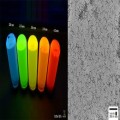 2013-09-12
2013-09-12
Quantum Materials Corp. announced it has shipped Tetrapod Quantum Dots in sample quantities to a diversified leading Asian-based electronics manufacturer. Quantum Materials recently developed tetrapod quantum dots to meet the client's performance specifications.
Continue reading →
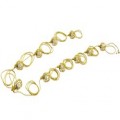 2013-09-12
2013-09-12
Larson Electronics has announced the release of a 100-foot string light system featuring LED lighting technology and high durability construction. The WAL-SL-10-LED Work Area Lighting LED String Light is fitted with 10 LED lamps, each producing more light than a 100 watt incandescent bulb, and provides workers with a cool running and versatile lighting system for illuminating large work areas.
Continue reading →
 2013-09-12
2013-09-12
Efficient LED solution by Traxon creates a special atmosphere in the wedding chapel at the Hyatt Regency Fukuoka Hotel in Japan.
Continue reading →
 2013-09-11
2013-09-11
The newest addition to the Apple family, the iPhone 5S/5C will be launched later this month. The addition of fingerprint recognition technology incorporating sapphire crystal has greatly benefitted substrate manufacturers. Crystal Applied Technology hit record highs with their August revenue at NT$194 million (US$6.5 million) with a monthly growth of 26.79 percent. Crystalwise Technology revenue for August was NT$170 million, an increase of 3.6 percent.
Continue reading →
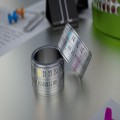 2013-09-11
2013-09-11
The Ring Clock combines LED technology to offer consumers an eco-friendly time piece that does not waste energy. The Ring Clock offers a running time of 1 week and automatic turn off after one minute of inactivity. The first of its kind, the ring is already generating quite a buzz.
Continue reading →
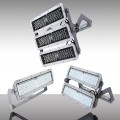 2013-09-11
2013-09-11
Designed and engineered for diverse general area, architectural and security illumination in public and commercial spaces, MaxLite® launches the versatile StaxMAX™ LED Flood Lights, which feature self-contained modular elements with variability in lumen output and optics capabilities.
Continue reading →
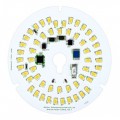 2013-09-11
2013-09-11
Seoul Semiconductor, a global LED manufacturer, has announced that Acrich2 LED modules powered by AC are now achieving luminous efficacies of 140lm/W, nearly a 20% upgrade from previous versions. The technology has been incorporated into lighting fixtures already being sold in major North American lighting retailers and has become the world’s best luminance efficacy AC LED module in the global solid state lighting market.
Continue reading →
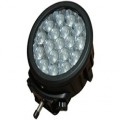 2013-09-11
2013-09-11
Larson Electronics has announced the release of a powerful new LED light bar that provides impressive lighting performance combined with extreme durability. The LEDP5W-18R LED Light Bar produces over 8,000 lumens of light output and can withstand abusive conditions that would cause standard incandescent lights to fail.
Continue reading →
2013-09-10
Commercial uses for ultraviolet (UV) light are growing, and now a new kind of LED under development at The Ohio State University could lead to more portable and low-cost uses of the technology.
Continue reading →
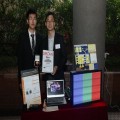 2013-09-09
2013-09-09
Hong Kong Polytechnic University’s (PolyU) Department of Electronic and Information Engineering has recently developed a high efficiency Pulse-Width Modulation (PWM) LED driver that will allow LED lamps to become brighter and more efficient.
Continue reading →
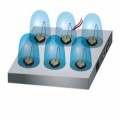 2013-09-09
2013-09-09
Engineered Material Systems (EMS), a global supplier of electronic materials for circuit assembly applications debuts its CA-195 high thermal conductivity, low cost electrically conductive LED die attach adhesive for attaching LED and other small semiconductor die to silver and copper lead frames.
Continue reading →
2013-09-09
Supplier of industrial lighting equipment Larson Electronics has announced the release of a powerful new mobile light tower designed for mobility and efficient stand alone operation. The WCDE-4-4X300W-LED Mobile Light Tower can effectively illuminate up to 6 acres and incorporates LED lighting technology to achieve exceptional efficiency and run time.
Continue reading →
 2013-09-17
2013-09-17
 2013-09-17
2013-09-17
 2013-09-17
2013-09-17
 2013-09-17
2013-09-17
 2013-09-16
2013-09-16
 2013-09-16
2013-09-16
 2013-09-16
2013-09-16
 2013-09-16
2013-09-16
 2013-09-14
2013-09-14
 2013-09-14
2013-09-14
 2013-09-14
2013-09-14
 2013-09-13
2013-09-13
 2013-09-13
2013-09-13
 2013-09-12
2013-09-12
 2013-09-12
2013-09-12
 2013-09-12
2013-09-12
 2013-09-12
2013-09-12
 2013-09-11
2013-09-11
 2013-09-11
2013-09-11
 2013-09-11
2013-09-11
 2013-09-11
2013-09-11
 2013-09-11
2013-09-11
 2013-09-09
2013-09-09
 2013-09-09
2013-09-09